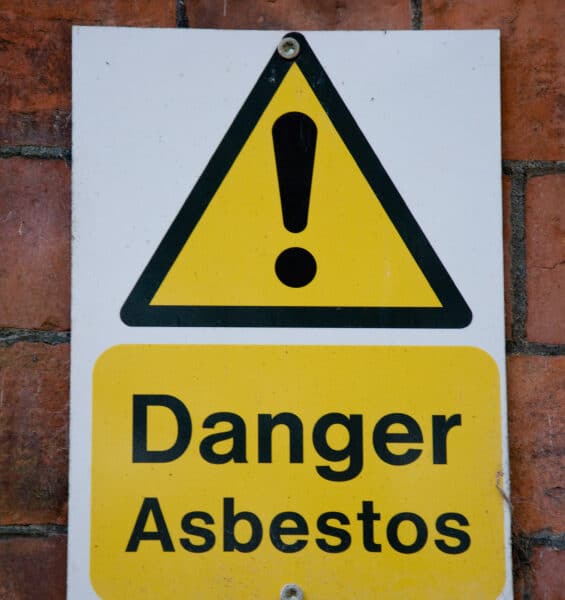
What is asbestos?
Asbestos is the generic term for a wide range of naturally occurring minerals that crystallise to form long thin fibres and fibre bundles.
Most respirable asbestos fibres are invisible to the unaided human eye because their size is around 3.0-20.0 µm in length, and can be as thin as 0.01 µm.
Types of asbestos
The three types of asbestos are blue, brown and white. They were often mixed with other materials and come in various shapes, sizes and colours, often making them difficult to identify.
Most common is the serpentine group, which includes chrysotile (white asbestos). This has been the most frequently mined worldwide.
A second asbestos group, known as the amphiboles, includes crocidolite (blue asbestos) and amosite (brown asbestos).
The historic use of asbestos
- Used in Cyprus 5000 years ago
- Evidence of use in Finland 2000 BC
- Used in fabrics such as Egyptian burial cloths and Charlemagne’s tablecloth, which, according to legend, he threw in a fire to clean it
- Well known to the Greek and Roman civilisations
- In the 1st century AD, Pliny the Elder noted that slaves working in asbestos mines died young of lung disease
- Used as insulation in suits of armour in the Middle Ages
- In the 13th century Marco Polo saw cloth that resisted the action of fire
- The mid-1800s saw the start of modern day usageWorld production peaked in 1977 when 6 million tonnes were mined, mainly in Russia, China, Eastern Bloc countries, Canada, South Africa and Australia
- Asbestos deposits can be found throughout the world, and are still mined in Australia, Canada, South Africa and the former Soviet Union
- Used extensively in England during war years
- Used in buildings from 1940s-1999, although its use declined towards the 1990s
- The use, supply and importation of blue and brown asbestos was banned in the UK in 1985
- White asbestos banned in the UK in 1999
Why is asbestos dangerous?
Intact asbestos doesn’t present an immediate risk to health. However, when materials that contain asbestos are disturbed or damaged, fibres are released into the air. When these fibres are inhaled, they can cause serious diseases and death.
Diseases caused by exposure to asbestos
- Mesothelioma
- Asbestos-related lung cancer
- Asbestosis
- Pleural thickening
A person who smokes is at a much greater risk of developing lung cancer if they are also exposed to asbestos.
Where is asbestos found?
The HSE provides information on where asbestos can found in many common materials used in the building trade:
- Loose asbestos in ceiling or floor cavity
- Asbestos insulating board
- Textured coatings
- Lagging
- Sprayed coatings on ceilings, walls and beams/columns
- Floor tiles, textiles and composites
- Asbestos cement products
- Rope seals and gaskets
- Roofing felt
Trades most at risk
Workers involved in refurbishment, maintenance and similar trades could be at risk of exposure to asbestos during their work. These trades include, but are not limited to:
- Painters and decorators
- Heating and ventilation engineers
- Demolition workers
- Plumbers
- Gas fitters
- Roofing contractors
- Cable layers
- Carpenters and joiners
- Plasterers
- Construction workers
- Fire and burglar alarm installers
- General maintenance staff, e.g. caretakers
- Shop fitters
- Computer and data installers
- Electricians
- Telecommunications engineers
- Architects, building surveyors
Legislation
The Control of Asbestos Regulations 2006 brought together three previous sets of Regulations covering the prohibition of asbestos, the control of asbestos at work and asbestos licensing, with a ‘duty to manage asbestos’ for those responsible for non-domestic premises.
The Regulations prohibit the use, supply and importation of all asbestos. This legislation prevents new uses of the mineral, but allows existing asbestos to remain in place if it is in good condition and undisturbed.
What action must you take if you are the landlord or the person responsible for a building containing asbestos?
An asbestos survey is the starting point for all buildings built before 2000. The survey needs to be undertaken by competent professionals. It will indicate if the building contains asbestos, where it is and its type. It will also help to ascertain what action is required for the management of the asbestos. Labelling of asbestos will highlight its presence.
What action must be taken by a tradesperson?
If work is to be undertaken within the building the tradesperson should:
- Request to read a copy of the asbestos survey
- Carry out a risk assessment for the work being undertaken
- If workers are not qualified to work with asbestos, they must not work in its proximity
- If workers inadvertently come across asbestos they must stop all work, leave the area and report this immediately
- All trade workers should attend an asbestos awareness course so they understand the associated risks. Only qualified competent persons can work with asbestos following strict guidelines
QCS provides full health and safety management policies to assist your business in the management of asbestos.
References
HSE – Asbestos health and safety
Asbestos.com – Mesothelioma in the UK
legislation.gov.uk – The Control of Asbestos Regulations 2012



